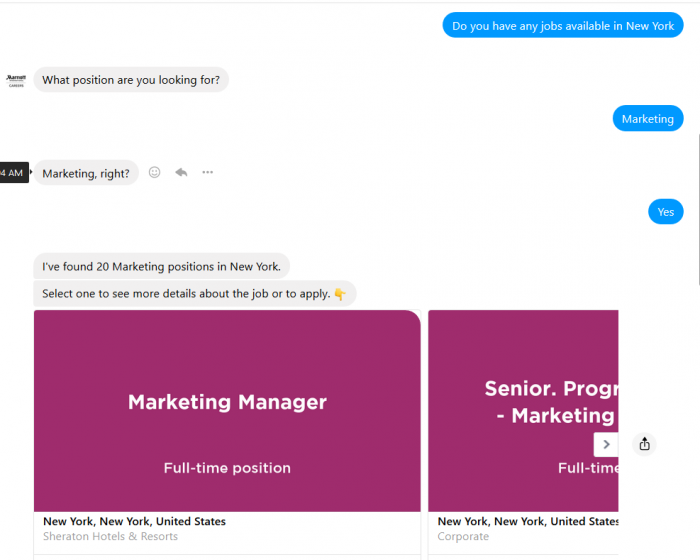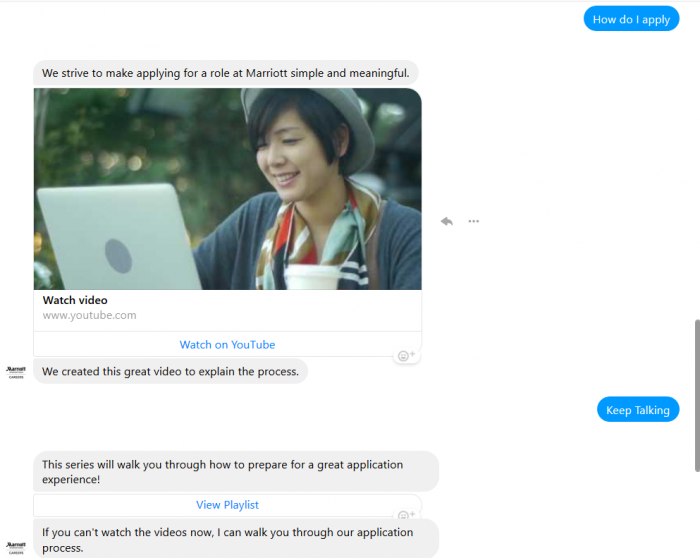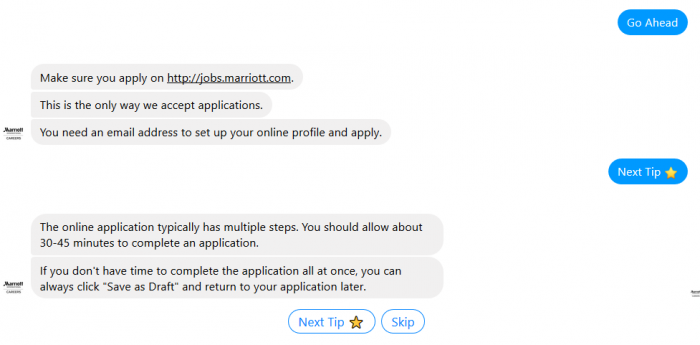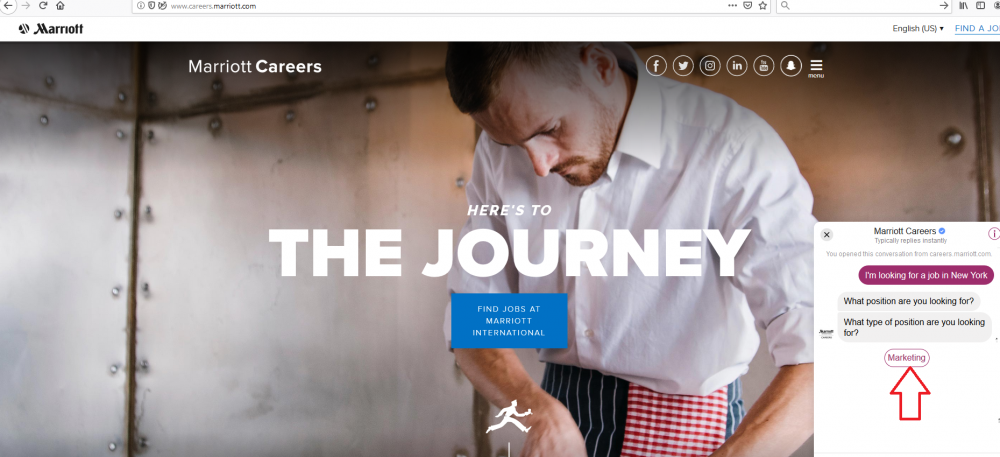Your Conversational Recruiting Strategy Can’t Succeed Without a Strong Knowledge Management Foundation

In a recent article here on Recruiter Today, Justin Moodley of LASANAN shared his advice to new recruiters: “The talent acquisition professionals who spend more time [engaging with] their candidate pools tend to have a better sense of how their candidates could fit in and excel at our organizations.” In contrast, Moodley explains, more mechanical, hands-off recruiting processes typically bring in poorly matched employees.
Though he doesn’t use the exact term, Moodley is recommending that recruiters adopt a conversational recruiting approach. In this article, I’d like to dig a bit deeper into what conversational recruiting actually entails. I’ll also explain why I believe knowledge management lies at the foundation of a successful conversational recruiting initiative.
What Is Conversational Recruiting?
As the name suggests, conversational recruiting is the process of attracting, engaging, and qualifying recruits by actually conversing with them. This conversation can — and should — take place on a variety of channels:
- Social media can be used to attract candidates via content, and recruiters can then engage with them in comments and direct messages.
- Text messages can be sent to individuals actively looking for open positions.
- Chatbots can be used on your careers site and your social media channels to provide automated responses to frequently asked questions and to point candidates toward applications and other resources.
- Video and audio calls can help answer candidates’ more in-depth, individualized questions and allow for increased engagement throughout the recruiting process.
There are two things to note here. First, the conversation doesn’t necessarily need to involve an actual human on your end. Yes, for more intensive and personalized engagements, you’ll want to engage with candidates on a one-on-one basis. In certain cases, however, it’ll be more practical (and acceptable) to enable automated communications via chatbots and other such technology.
Still, these automated communications should have a human feel to them. For example, check out how Marriott uses a chatbot on Facebook to engage potential employees:



While the “person” on the company’s end of the conversation is clearly a machine, this fact hardly takes away from the overall value of the engagement. The candidate now knows more about Marriott’s open positions, and the company knows there’s a potential hire looking for a job.
The second thing to note is your conversations with potential hires should be ongoing, from your first engagement to the moment they come aboard. This doesn’t mean you have to be in constant contact with candidates, but you do need to ensure the conversation always moves your relationship forward in some way.
Take the Marriott example from above. If the candidate comes back at a later date and reengages the chatbot, they don’t want to start from scratch. Rather, they will likely be asking for further information about the positions available or if any new jobs have been posted since their last check-in. Regardless of their current question, they’ll expect the chatbot to remember the information they exchanged during their previous conversation.

In the example above, a second conversation regarding available careers at Marriott was started on the company’s website. When asked about available jobs in New York, the chatbot remembered that the applicant was originally interested in marketing.
The example above also shows the importance of being able to have a conversation that can cross channels. Additionally, Marriott may use the information gleaned about this potential employee to send them push notifications or automated emails when new marketing positions in New York become available.
The ultimate goal of conversational recruiting is to engage with potential hires to the point that, by the time the right candidate gets to the interview stage, it’s merely a formality. Since you’ll have already learned everything you need to know to make a hiring decision, said decision will be much easier for your team to make.
For more expert recruiting advice, check out the latest issue of Recruiter.com Magazine:
The Role of Knowledge Management in Conversational Recruiting
Conversational recruiting is all about getting the right information to the right candidate at the right time (and in the right place). It should be clear, then, that proper knowledge management is vital to the success of your conversational recruiting efforts in a few ways.
Let’s break this idea down a bit further:
Deliver Information in Real Time
When engaging with candidates, it’s essential that you’re able to provide the information they’re looking for pretty much on the fly. Without a knowledge management system backing your conversational recruiting efforts, there’s just no way this can happen. However, a strong knowledge base that recruiters can access readily allows you to quickly deliver the information your candidates need to consider engaging further with your organization.
If you’ve set up a chatbot, it will also rely on your knowledge management processes to deliver the right information to candidates. The more comprehensive and structured your knowledge base and content, the better your chatbot will be at pointing candidates in the right direction.
Collect Information in Real Time
The other side of conversational recruiting is collecting information on potential new hires. Systematic knowledge management ensures your team is able not only to take in as much information as possible, but also to use this information to further your recruiting efforts.
In terms of the the actual intake of hiring data, a solid knowledge management plan ensures that any info provided by candidates gets captured and piped into your centralized database. Moreover, knowledge management ensures said data remains current at all times, and that outdated or duplicate information is marked as such (and stored or disposed of as needed). This, in turn, allows your team to keep the conversation going with individual candidates with little to no friction between engagements.
Going back to Marriott’s example, the company’s chatbot will likely continue providing New York-specific information unless the candidate mentions they’re also looking elsewhere. If they do provide additional information, the chatbot will take this data into consideration for future engagements.
Since your team will always know where they last left off with a given candidate, both parties can pick the conversation right back up the next time they engage with one another.
Engage the Right Candidates at Optimal Moments
The more your candidates know about your company — and the more you learn about each candidate — the easier it will be to find that perfect match. Conversational recruiting backed by solid knowledge management allows for this exchange of information to take place over time. As we’ve discussed, your relationships with potential new hires can begin growing from the very first touchpoint.
Knowledge management also strengthens your conversational recruiting efforts in that it allows you to identify the optimal manner in which to engage with candidates throughout the hiring process. For example, for a given candidate, you can learn their preferred communication platform, the type of information they find most valuable in their job search, and the best time to reach out to them to engage in real-time conversation. This allows you to proactively reach out to candidates at optimal moments in their job searches, providing value and getting them more engaged with your organization at each touchpoint.
Think about it like this: If the Marriott candidate doesn’t typically check their email inbox for job notifications, it wouldn’t make sense for the company to try to engage them on this channel. If, in this example, Marriott’s chatbot isn’t configured to proactively send job postings to such individuals, both parties will likely miss out on a ton of major opportunities.
Every recruiter and job seeker has a “right place, right time” story of some kind. Conversational recruiting — when backed by a true understanding of your potential hires — can allow you to learn when and where that time and place are for each candidate.
—
Engaging with candidates via authentic, informative conversation is an effective way to find the exact hires you’re looking for. But, to get these conversations started and keep them moving in the right direction, your efforts need to be built on a solid foundation of knowledge management.
With knowledge at the helm of your recruiting efforts, you’ll have a much clearer idea of what you’re looking for in an ideal employee, where and how to find top-quality candidates, and how to best engage with these candidates once you uncover them. In turn, you can spend more time engaging and onboarding the best-fit candidate for every position you have.
Emil Hajric is the founder and CEO of Helpjuice and the author ofKnowledge Management: A Theoretical and Practical Guide for Knowledge Management in Your Organization.

